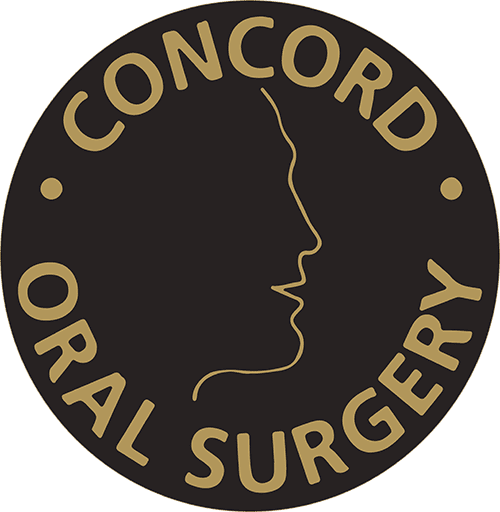Reviewed By Dr. Robert Barron, DMD
Reading Time: 5 minutes
A sinus lift helps create the bone support needed for successful dental implants. When healing goes as planned, it lays a solid foundation. But like any surgery, there’s a small chance of complications.
If you are recovering from a sinus lift or preparing for one, it is important to understand what healing should feel like and what signs might indicate something is wrong.
In this blog, you will learn:
- What a sinus lift does and why it is important
- How healing is supposed to feel
- Symptoms of a failed sinus lift
- When to call your oral surgeon
Table of Contents
Key Takeaway
If your sinus lift is failing, you may feel worsening pain, swelling, ongoing nasal drainage, or notice exposed graft material. These are not normal healing symptoms!
If anything feels off, call your oral surgeon.
What Is a Sinus Lift?
A sinus lift is a type of bone grafting procedure that adds height to the upper jaw in the area beneath the sinus cavities. It is used when there is not enough bone to support a dental implant safely.
The goal is to restore bone volume and create the space needed for secure, long-lasting implant placement.
How Healing Normally Feels
After a sinus lift procedure, you will likely experience:
- Mild swelling in the cheek or under the eye
- Pressure or stuffiness in the sinus area
- A small amount of bleeding from the nose or mouth
- Mild discomfort during the first few days
These symptoms are typical of the healing process and usually improve within the first week. You will receive post-operative instructions that will help support your recovery and lower your risk of infection when followed carefully.
Symptoms of a Failed Sinus Lift
A failed sinus lift is rare, but it can happen.
It usually means the graft did not integrate with your natural bone or the sinus membrane was compromised.
Watch for these symptoms:
- Ongoing or severe facial pain
- Swelling that gets worse instead of better
- Signs of infection including pus, bad breath, or a persistent bad taste
- Nasal congestion or drainage that does not stop
- Fever or chills
- Bone graft material exposure
These symptoms may indicate bone graft failure and require prompt care.
What Causes Sinus Lift Complications?
Understanding the source of the problem can help you avoid it.
Here are the most common complications that cause sinus lift failure.
- Sinus membrane perforation: A tear in the sinus membrane during surgery can cause bone graft material to move out of place, which may affect healing.
- Poor oral hygiene: Bacteria can infect the graft, especially if gum tissue is not kept clean.
- Smoking: Can cause infection and slow healing.
- Chronic sinusitis or a sinus infection: These interfere with maxillary sinus function and graft integration.
- Not following post-surgery guidelines: Actions like blowing your nose, sneezing forcefully, or using a straw can create pressure that may dislodge the bone graft.
What to Do If You Notice a Problem
☎️ Call us!
We will examine the site using 3D imaging and assess the condition of your soft tissues, bone tissue, and the maxillary sinus cavity.
If needed, we may prescribe medication, clean the area, or plan for follow-up medical treatment. In some cases, we will wait for healing before attempting a new graft or recommend alternatives like zygomatic implants.
Prompt care reduces the risk of long-term damage or costly replacement procedures.
How to Lower the Risk of Failure
Follow these steps:
- Choose a surgeon who specializes in oral surgery and dental implant surgery
- Follow your personalized post-op instructions exactly
- Maintain excellent oral hygiene during recovery
- Avoid anything that changes sinus pressure for at least 10–14 days
- Schedule and attend all follow-up appointments
Have Questions After Your Sinus Lift? We’re Here to Help
If you had a sinus lift procedure and something doesn’t feel right, call us.
We will check your healing progress, look for any signs of complications, and make sure everything is on track.
To book a follow-up appointment at our oral surgery office in Vaughan, call (905) 669-2616 or complete the appointment request form. We are located at 3300 Highway 7 West, Suite 805 Vaughan, ON.
FAQs About Sinus Lift Complications
How long should pain last after a sinus lift?
How long should pain last after a sinus lift?
Mild discomfort typically lasts a few days. Pain that worsens or returns after getting better may be a sign of a dental bone graft failure.
Is bleeding from the nose normal after a sinus lift?
Some light nose bleeding is normal for the first 24–48 hours. Continuous or heavy bleeding or purulent exudate needs attention.
Can I fly after a sinus lift?
Avoid flying for at least two weeks. Pressure changes can affect the membrane during sinus floor healing and cause post nasal drip or other issues.
How do I know if my graft failed?
Late signs include persistent pain, swelling, visible graft material, or issues with adjacent teeth or implant stability.
What should I avoid after sinus lift surgery?
No smoking, nose blowing, or heavy lifting. Avoid hard foods that can irritate the gum tissue and dislodge the graft.

